The Power of Social Media Influencer Marketing: Driving Brand Growth in the Digital Age

Introduction to Social Media Influencer Marketing
In today’s digital-first world, traditional advertising no longer holds the same impact it once did. Consumers crave authenticity, connection, and trust—values that are often missing in conventional marketing campaigns. This shift has given rise to a powerful new form of promotion: social media influencer marketing. Influencer marketing leverages individuals who have a strong online presence, loyal followers, and the ability to shape opinions and drive purchasing decisions. These influencers bridge the gap between brands and consumers, offering credibility and relatability that traditional ads simply can’t match. Social media influencer marketing has evolved into one of the most effective strategies for increasing brand awareness, engagement, and conversions.
Understanding Social Media Influencer Marketing
Social media influencer marketing involves collaborating with influencers—individuals who have built a significant following on platforms like Instagram, YouTube, TikTok, Facebook, and LinkedIn—to promote a brand’s products or services. These influencers can range from celebrities and industry experts to micro-influencers with smaller but highly engaged audiences. The key to successful influencer marketing lies in selecting influencers whose personal brand aligns with the company’s values, goals, and target audience. Instead of pushing sales messages, influencer marketing focuses on storytelling, experience sharing, and organic promotion, making it a more authentic and persuasive form of advertising.
The Evolution of Influencer Marketing
Influencer marketing has come a long way since its early days. Initially, brands partnered with celebrities or well-known figures to endorse their products. However, with the rise of social media platforms, everyday individuals began gaining popularity by sharing relatable content, lifestyle tips, fashion advice, or product reviews. These micro and macro influencers became powerful voices in the digital space, reshaping how brands connect with their audiences. Today, influencer marketing is not just about reach but about resonance—building meaningful relationships and fostering trust through authentic collaborations.
Types of Influencers in the Digital Space
Influencers are generally categorized based on their follower count and niche specialization:
-
Mega Influencers: These are celebrities or public figures with millions of followers. They offer massive reach but often come with high costs.
-
Macro Influencers: Typically have between 100K to 1M followers and are often experts or well-known personalities within specific industries.
-
Micro Influencers: With audiences ranging from 10K to 100K followers, they are known for their authenticity, niche expertise, and high engagement rates.
-
Nano Influencers: These individuals have less than 10K followers but often boast strong connections with their communities and can generate impressive engagement through personal interactions.
Each type of influencer serves a unique purpose in social media influencer marketing, depending on a brand’s goals—whether that’s broad awareness or focused conversions.
Why Social Media Influencer Marketing Works
The success of influencer marketing stems from the power of trust. Modern consumers are skeptical of traditional advertisements and instead turn to real people for recommendations. Influencers, through consistent content creation and genuine interactions, build strong relationships with their audiences. When an influencer endorses a product, it feels like a trusted friend’s recommendation rather than a sales pitch. Additionally, influencer marketing is effective because it integrates seamlessly into a user’s feed. Instead of interrupting the browsing experience, influencer content adds value, entertainment, and authenticity.
Top Platforms for Influencer Marketing
Different social media platforms cater to different audiences and content styles, making platform selection a crucial part of any influencer strategy:
-
Instagram: The most popular platform for influencer marketing, ideal for visual storytelling, lifestyle brands, and fashion, beauty, or travel niches.
-
YouTube: Perfect for long-form video content, tutorials, product reviews, and vlogs that allow influencers to provide in-depth information.
-
TikTok: Rapidly growing, known for its viral trends, creative challenges, and short, engaging video content that appeals to younger audiences.
-
Facebook: Still a strong contender, especially for community-based marketing and longer engagement through groups and live sessions.
-
LinkedIn: Ideal for B2B influencer marketing where professionals share insights, tools, and thought leadership content.
Each platform offers unique advantages, and a brand’s strategy should align with the platform where its target audience spends the most time.
Benefits of Social Media Influencer Marketing for Brands
-
Enhanced Brand Awareness: Partnering with influencers exposes your brand to new audiences and helps create visibility across diverse platforms.
-
Authentic Engagement: Influencer content feels personal, encouraging more likes, shares, and comments compared to traditional ads.
-
Higher Conversion Rates: Followers who trust influencers are more likely to take action, whether it’s visiting a website or purchasing a product.
-
Cost-Effective Campaigns: Especially when working with micro or nano influencers, brands can achieve high ROI without massive budgets.
-
Improved SEO and Online Presence: Influencer collaborations often include backlinks and increased social mentions, contributing to better search rankings.
-
User-Generated Content: Brands can repurpose influencer-created content for their own marketing campaigns, saving time and resources.
Creating a Successful Influencer Marketing Strategy
To maximize the impact of influencer marketing, brands should follow a structured approach:
-
Set Clear Goals: Identify what you aim to achieve—brand awareness, sales growth, app downloads, or engagement.
-
Define Your Target Audience: Understand who your ideal customers are and which influencers they follow.
-
Choose the Right Influencers: Look for influencers who align with your brand’s message, values, and aesthetic. Focus on engagement rates, not just follower count.
-
Build Authentic Relationships: Treat influencers as long-term partners, not just one-time promoters. This builds stronger brand loyalty and trust.
-
Create Collaborative Campaigns: Encourage influencers to use their creativity rather than forcing scripted content. Authenticity always wins.
-
Measure Performance: Use analytics to track metrics like reach, engagement, website traffic, and conversion rates. Adjust strategies based on performance data.
Micro vs. Macro Influencers: Which Is Right for You?
While macro influencers provide massive reach, micro influencers often deliver deeper engagement and trust. For smaller brands, partnering with several micro influencers may yield better results than one expensive macro influencer. Micro influencers also tend to have niche audiences, allowing brands to target specific markets more precisely. On the other hand, macro influencers are great for large-scale brand awareness campaigns, especially during product launches or events. The ideal approach often involves a mix of both, balancing reach with authenticity.
Influencer Marketing Trends Shaping the Future
The influencer landscape continues to evolve rapidly. Here are some emerging trends shaping the future of social media influencer marketing:
-
AI-Powered Influencer Selection: Brands now use AI tools to identify suitable influencers based on engagement data, sentiment analysis, and audience demographics.
-
Live Commerce: Influencers hosting live shopping events on Instagram or TikTok are revolutionizing online retail.
-
Niche Communities: Micro and nano influencers who focus on specific interests (e.g., sustainability, wellness, gaming) are becoming increasingly valuable.
-
Employee and Customer Influencers: Brands are turning their employees and loyal customers into advocates, enhancing authenticity.
-
Performance-Based Collaborations: Instead of fixed payments, brands are adopting commission-based models tied to influencer performance metrics.
Challenges in Influencer Marketing
Despite its success, influencer marketing comes with challenges. Fake followers, poor engagement, and mismatched collaborations can hurt campaigns. Brands must verify influencer credibility through data analysis and background checks. Over-commercialization is another concern—if influencers promote too many products, audiences may lose trust. Maintaining authenticity is crucial for long-term success. Additionally, regulatory compliance such as disclosing paid partnerships is essential to maintain transparency.
How to Measure Influencer Marketing Success
The success of influencer marketing isn’t measured solely by likes or views. Brands must evaluate broader KPIs such as:
-
Engagement Rate: Indicates how actively followers interact with the content.
-
Reach and Impressions: Reflects how many users were exposed to the campaign.
-
Click-Through Rate (CTR): Shows how effectively influencer content drives traffic to brand pages.
-
Conversion Rate: Measures actual sales or sign-ups generated.
-
Return on Investment (ROI): Helps determine overall profitability and campaign effectiveness.
Accurate tracking tools and influencer-specific discount codes or UTM links can simplify measuring results.
Real-World Examples of Successful Influencer Campaigns
Many global brands have leveraged influencer marketing with great success. For instance, fashion brands like Gucci and Dior collaborate with fashion bloggers to showcase new collections, while tech companies like Samsung work with YouTubers to demonstrate product features. Even small businesses now thrive through influencer partnerships on TikTok, where creative short videos can go viral overnight. These campaigns prove that influencer marketing isn’t just for big names—it’s accessible and effective for brands of all sizes.
The Role of Authenticity and Transparency
At the heart of influencer marketing lies authenticity. Consumers can easily spot insincerity, so influencers must genuinely believe in the products they promote. Transparent partnerships, clear communication, and honest reviews foster credibility and maintain trust. When influencers share real experiences and personal stories, followers connect more deeply with the message, strengthening the brand-consumer relationship.
Conclusion: The Future of Social Media Influencer Marketing
Social media influencer marketing has transformed from a trend into a necessity in modern digital strategy. It humanizes brands, builds communities, and drives measurable results. As technology advances and consumer behaviors shift, influencer marketing will continue to evolve—becoming more data-driven, personalized, and interactive. Brands that embrace authentic collaborations, transparency, and creativity will not only survive but thrive in this ever-changing digital ecosystem. In the future, the most successful brands will be those that understand the power of influence, nurture real connections, and turn online voices into loyal brand advocates.
Final Thoughts
Social media influencer marketing is more than just a marketing tactic—it’s a bridge between brands and audiences built on trust and authenticity. Whether you’re a startup or an established enterprise, leveraging the right influencers can amplify your message, expand your reach, and turn your followers into loyal customers. As digital landscapes continue to evolve, one thing remains certain: influencer marketing isn’t just the present—it’s the future of brand communication.
- Vibnix Blog
- Politics
- News
- Liberia News
- Entertainment
- Technology
- Formazione
- Art
- Causes
- Crafts
- Dance
- Drinks
- Film
- Fitness
- Food
- Giochi
- Gardening
- Health
- Home
- Literature
- Music
- Networking
- Altre informazioni
- Party
- Religion
- Shopping
- Sports
- Theater
- Wellness



